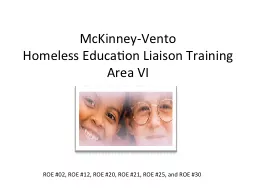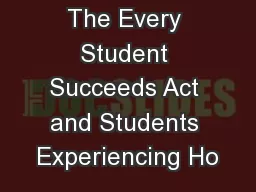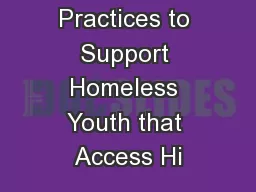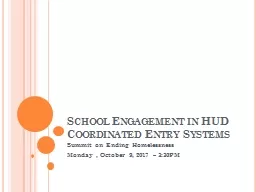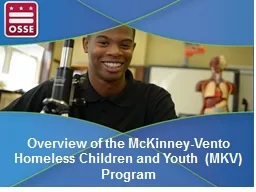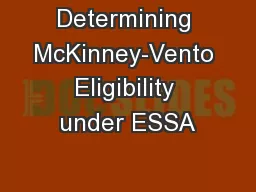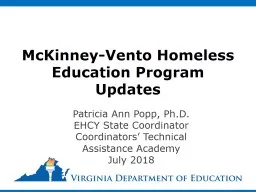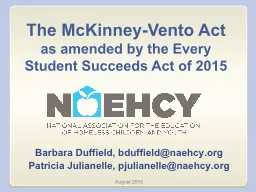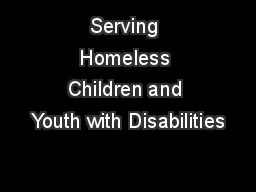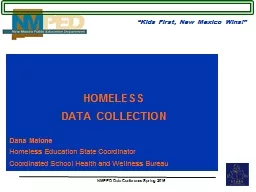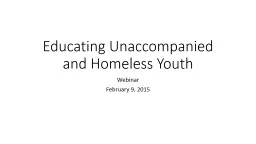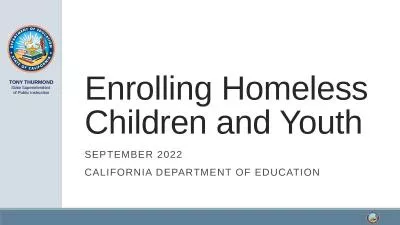PPT-McKinney-Vento Homeless Education Liaison Training
Author : test | Published Date : 2018-03-16
Area VI ROE 02 ROE 12 ROE 20 ROE 21 ROE 25 and ROE 30 60 Minutes 2 http wwwyoutubecomwatchvL2hzRPLVSm4 What does the law say Identify the student as being homeless
Presentation Embed Code
Download Presentation
Download Presentation The PPT/PDF document "McKinney-Vento Homeless Education Liaiso..." is the property of its rightful owner. Permission is granted to download and print the materials on this website for personal, non-commercial use only, and to display it on your personal computer provided you do not modify the materials and that you retain all copyright notices contained in the materials. By downloading content from our website, you accept the terms of this agreement.
McKinney-Vento Homeless Education Liaison Training: Transcript
Download Rules Of Document
"McKinney-Vento Homeless Education Liaison Training"The content belongs to its owner. You may download and print it for personal use, without modification, and keep all copyright notices. By downloading, you agree to these terms.
Related Documents

